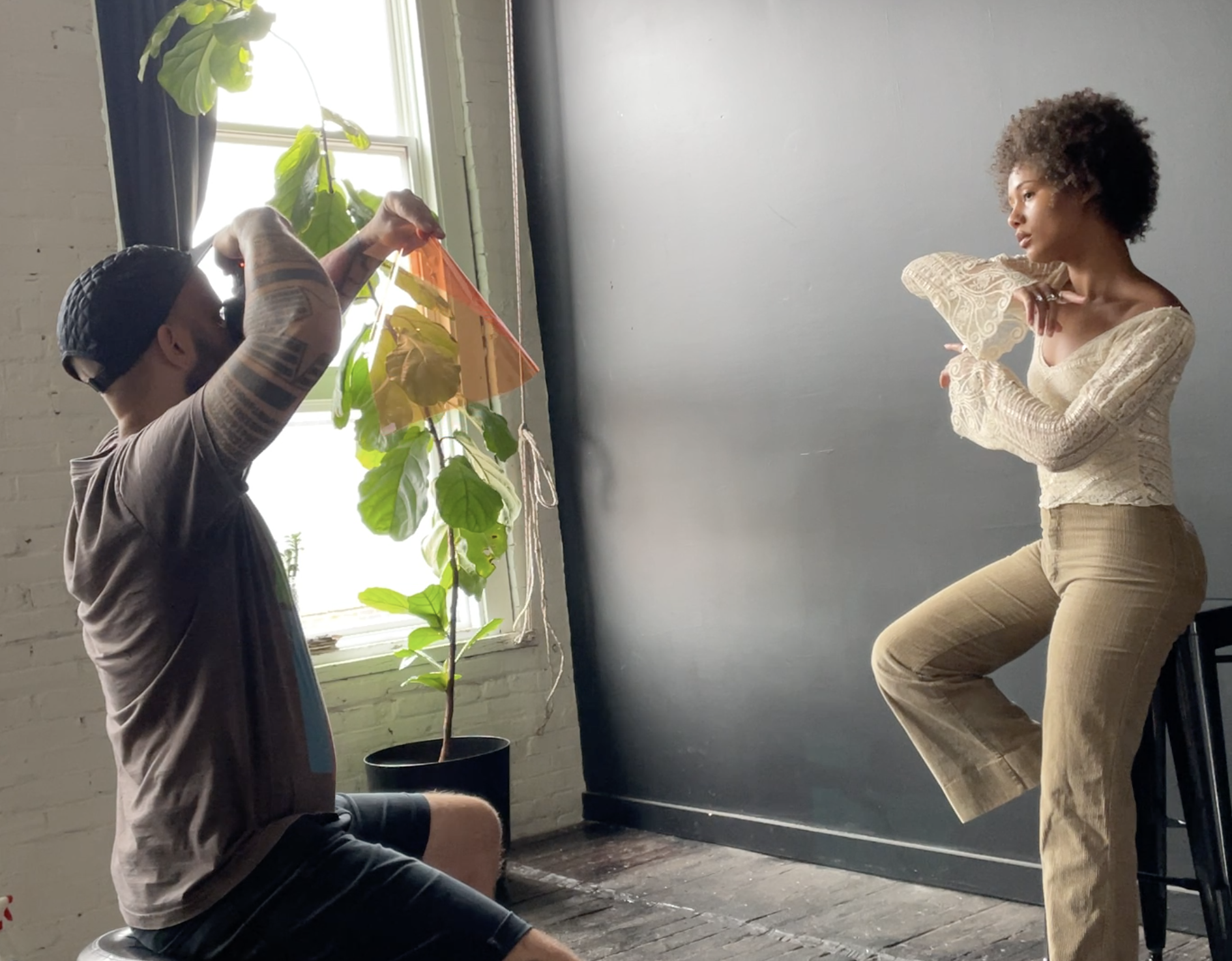Last week I began experimenting with fiber optic “light painting” brushes to be used when making long exposures. Whenever I’m trying to wrap my head around a new technique I first practice on a still life, so I first stopped at a floral shop to acquire some flowers. When I got back to my studio I set up a scene of skulls, plants, and flowers, then I closed all the blackout curtains to darken the room and began playing with light. I kept my exposures around 10 seconds which allowed me just enough time to paint the light into the scene. After shooting a handful of images I decided to see what would happen if I were to make an in-camera multiple exposure, painting in one color at a time. This ended up being my favorite way of working as it allowed me to apply different colors of light to different parts of the image, much light painting a canvas. Once I had a decent grasp on the technique I was ready to try it on a human, Lily being my wonderful, patient collaborator.
When Lily arrived at my studio I decided to start off with some colorful water drop portraits before getting into the light painting. As you can see in the setup photo, I set up a large sheet of plexiglass in front of Lily, which I sprayed with a water/glycerin mix. I lit her with a cyan-gelled soft box and lit the background with magenta and gold-gelled strobes. The water drops are essentially a thousand tiny pictures of the whole scene, capturing all the colors and shapes. Because of this I made sure to leave a lot of shadow area on the front of Lily so that the magenta and gold colors of the background were brought to the foreground and interplayed with the cyan.
After shooting a range of close-up and mid-range images I struck the set, pulled up the backdrop, and covered the windows to do some light painting. After getting a few nice images I opened the curtains and wound down the session by shooting with window light. I used my fungus-filled lens while shooting through an orange color corrective gel. I held the gel a few inches away from the lens and changed the angle with each shot, which reflected the room behind me, creating the look of lens flare in the images.
To see more techniques like this make sure to pre-order my upcoming book, The Creative Portrait.











